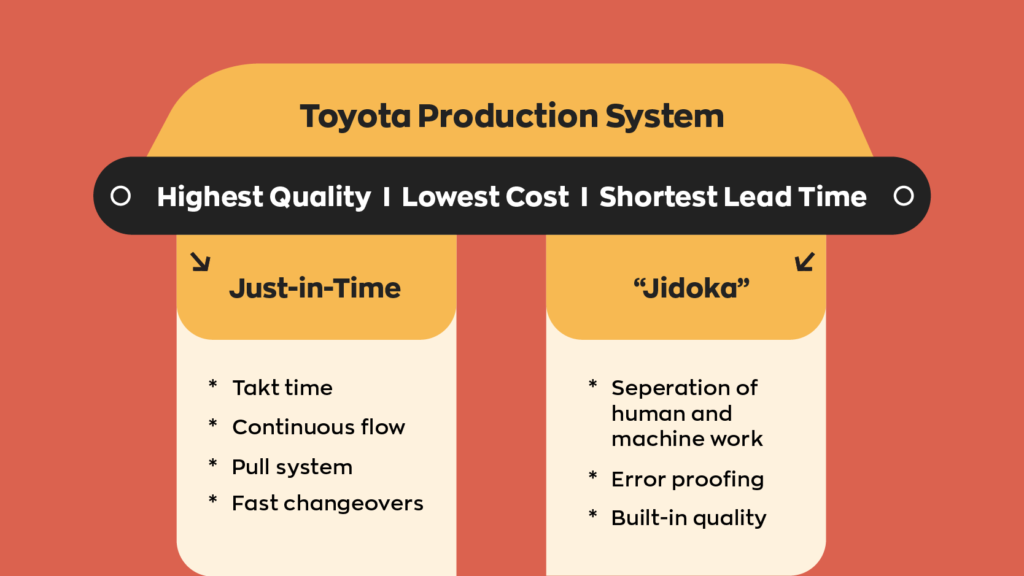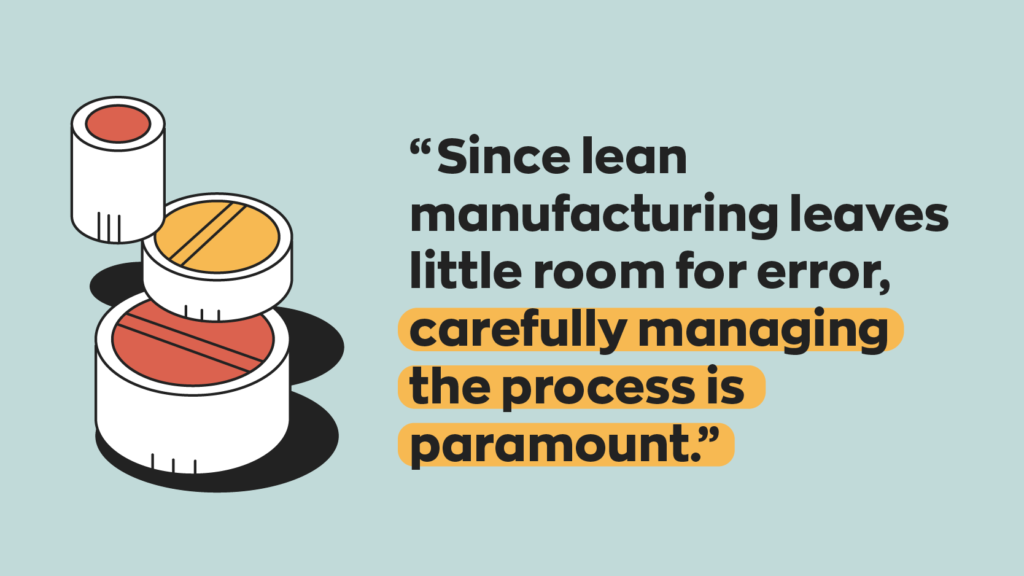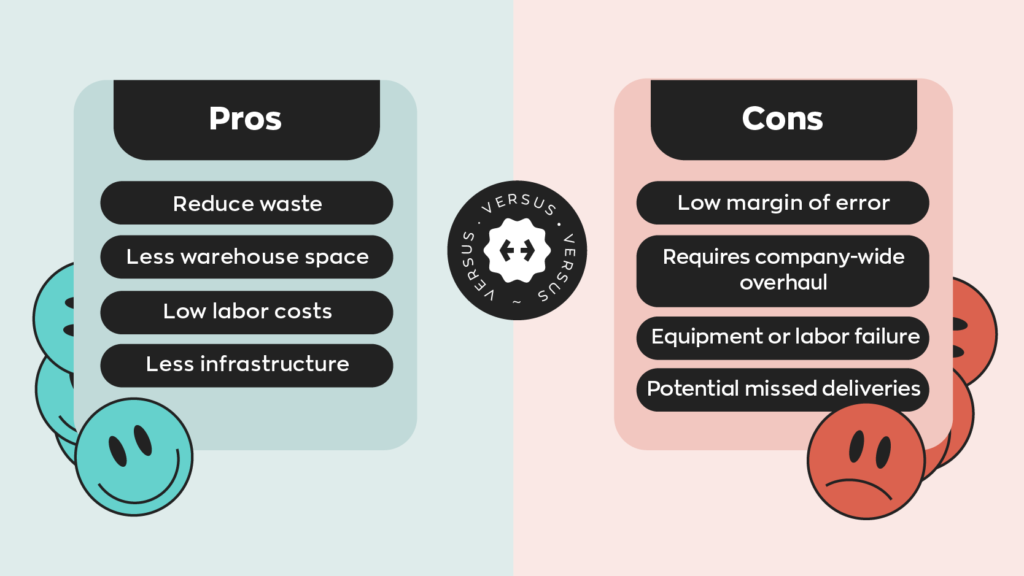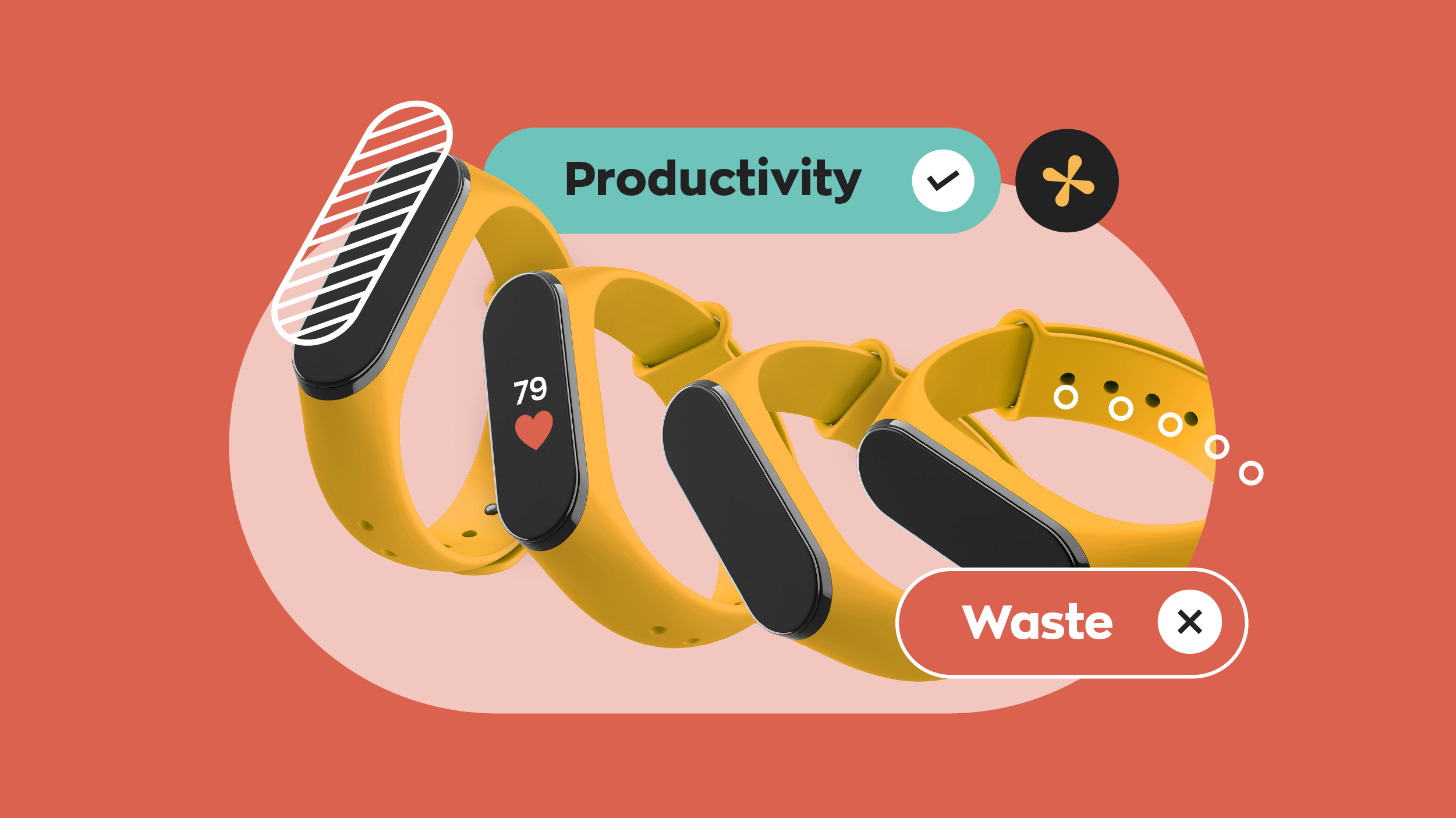Key takeaways
- Lean manufacturing principles focus on minimizing waste while maximizing efficiency in the manufacturing process.
- Lean manufacturing originated from the Toyota Production System (TPS) and is built on two main pillars: Just-in-Time (JIT) inventory and Jidoka (automation with a human touch).
- The five principles of lean manufacturing are identifying value, charting the value stream, optimizing flow, establishing a pull system, and seeking perfection.
- A pull-based production system ensures that products are made based on actual customer demand, reducing excess inventory.
- Lean manufacturing methods help businesses reduce costs, improve quality, and shorten production times by eliminating inefficiencies.
- Continuous improvement is a core concept behind lean manufacturing. It encourages companies to refine and improve processes regularly.
Something that business owners learn very quickly is the importance of time. Not only is it a highly limited resource, but it is also necessary to get anything done, making it a valuable currency. It is the main reason businesses are always looking for ways to increase efficiency. Naturally, this carries over to the manufacturing side of things as well.
Lean manufacturing is a product of this ideology. So, what is lean manufacturing? How does it relate to the Toyota Production System (TPS)? And how does it reduce waste for manufacturers?
For the TLDR on lean manufacturing, watch this short clip from our new podcast!
What is lean manufacturing?
Lean manufacturing is a manufacturing strategy that seeks to reduce waste through optimized manufacturing processes. In particular, lean manufacturing systems focus on reducing production times at each stage of the manufacturing process as much as possible. The exact process differs from industry to industry, but the core principles remain the same.
How does TPS relate to lean manufacturing?
In order to understand lean manufacturing, it’s necessary to have an understanding of the TPS or Toyota Production System. First coming into prominence in the 1950s, the TPS functions based on two core “pillars”: JIT and jidoka.

Just-in-time (JIT) is the principle that each process only produces what the following process needs. It also minimizes the amount on hand, increasing cash flow. Jidoka is a Japanese term that describes a concept that is a bit more complex. It roughly translates to “automation with a human touch.” To keep things simple, this means that when an error occurs, the manufacturing process stops, which prevents defective products.
It’s important to note that TPS is a principle, while lean manufacturing is a production system. The two are not the same thing.
5 major principles of lean manufacturing
There are five major principles that any business should follow in order to successfully implement lean manufacturing. These principles are as follows:
1. Identify value
This principle asks businesses to understand what value their products provide to their customers. This can reduce costs by cutting out unnecessary product features. Further, you may be able to reduce waste by adding features that are appealing to your customer base. For example, an eco-conscious customer base may find value in an adjustment to packaging that reduces the use of plastic and other materials.
2. Chart the value stream
A value stream is a construct that shows how a product creates value. To document the value stream, track the product throughout the manufacturing steps that develop the value of the product. In doing this, you will better understand what steps you must take to add value to those products or what steps could be made more sustainable or efficient.
3. Optimize flow
Maintaining flow means moving products and components through processes as efficiently as possible. This reduces idle time and helps eliminate bottlenecks and/or blockages. Improving the flow should not only optimize workflows within every department, but also those shared between departments.
4. Establish a pull system
It is important to note that pull systems are not exclusive to lean manufacturing, but in that context, a pull system manufactures products according to demand. When an order comes in, a new work order is created. This increases cash flow and minimizes capital tied up in different types of inventory, such as work-in-progress inventory and stored finished goods.
5. Approach perfection
Just to be clear, perfection is an impossibility. Human error is a constant, and even if it weren’t, machines malfunction. Still, though, perfection — or as close to it as you can get — is an essential part of lean manufacturing. Lowering the margin of error reduces defective units, saving money.

How does lean manufacturing reduce waste?
The lean manufacturing principles aim to reduce seven types of waste by minimizing downtime and making processes more efficient. The seven types of waste are as follows:
- Unnecessary transportation: When a component or product is in transit, it is not actively contributing to the manufacturing process.
- Excess inventory: In terms of manufacturing, this means raw materials or work-in-progress (WIP) inventory. Lean manufacturing decreases the amount of inventory on hand, which frees up capital to use elsewhere.
- Unnecessary movement of people or equipment: Similar to unnecessary transportation, when an employee or equipment is in transit, they are not actively contributing to the manufacturing process.
- Idle time: Because different parts of the manufacturing process rely on each other, the production flow can halt because of a single bottleneck.
- Overproduction: One of the risks of manufacturing in bulk is the fluctuation of demand. If you manufacture a batch and demand drops, you are left with a hard-to-sell product.
- Over-engineering: It is not uncommon for products to have unnecessary features. Cutting these features reduces manufacturing costs and time, saving money in multiple areas.
- Defects: Arguably, the most costly form of waste is defects. If a product is defective, not only does it need to be discarded, it needs to be replaced. This doubles the cost of producing a single unit, meaning that reducing defects can save a lot of long- and short-term capital.
Lean manufacturing seeks to minimize waste output by streamlining the process. Even if the gains seem small — a couple minutes or dollars here or there — targeting so many different parts of the process means that the saved time and money adds up quickly.
Benefits and downsides of lean manufacturing
Like many business systems, utilizing lean manufacturing principles saves businesses time and money — and, in the long run, quite a bit of it. This is because it targets many different parts of the process. On top of making the workflow more efficient and minimizing waste, it also reduces inventory kept on hand.

The amount of time and money saved might seem incremental, but because it affects so many different parts of the process, that little amount becomes a lot. It also adds up over time. Over the years, 50 cents saved per unit could add up to tens or even hundreds of thousands of dollars saved.
The biggest downside of lean manufacturing comes from its use of a pull system and its relation to JIT inventory. This leaves very little room for error. Being one component short could leave the product unfinished, creating further bottlenecks down the line.
Lean manufacturing also isn’t something that you can implement right away. Noticing and eliminating inefficiencies requires a lot of information over a significant period. It could take months, or even years, to gather the necessary data.
Lean continuous improvement
Ideally, adopting lean manufacturing principles should be considered an ongoing goal rather than a single, limited effort. Effective lean manufacturing efforts require ongoing analysis of data and processes, gradual implementation, and review of the efficacy of improvements. A business should always try to find ways to reduce waste in its manufacturing processes, and new options may emerge over time as strategies and technologies evolve.
Adopting certain technologies will make lean manufacturing efforts considerably easier. For example, automating a large portion of your workflow with the use of barcodes.
Where to start?
Like so many other things in the business world, decision-making depends on information above all else. This means you need near-total control and insight over both the manufacturing process and inventory management. Finding a system that ties inventory management and the manufacturing process together goes a long way in making it more manageable.
inFlow offers a perpetual inventory management system and comprehensive manufacturing software, keeping everything in one place.






0 Comments